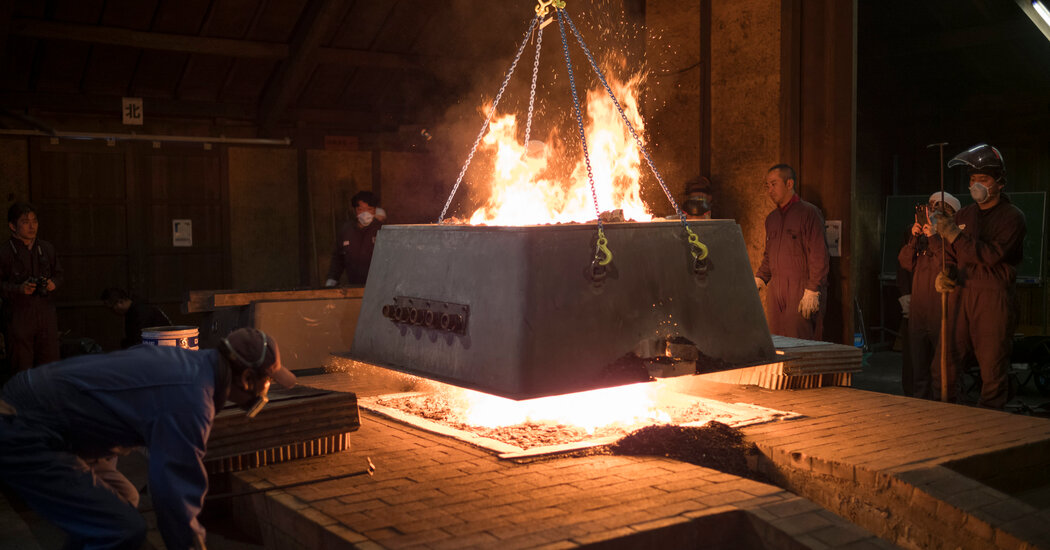This past October, I found myself in Yoshida Village standing before a tatara, a giant open-top furnace that was filled with charcoal and raging with such controlled ferocity that it could have been a set piece in Lucifer’s bedroom.
Deep within the belly of those orange flames sat a growing and mangled ingot that contained some exceptionally high-quality steel called tamahagane, or jewel steel, from which Japanese swords have been made for much of the country’s history. The presence of a usable ingot seemed unlikely, and if true, downright alchemic. All we had been doing for the last 20 hours was gently shaking iron sand and fresh charcoal onto the flames at timed intervals.
Yoshida is nestled back in the mountains of Shimane Prefecture in central Japan, abutting the ever-turbulent Sea of Japan. For nearly 700 years, workers around Yoshida made jewel steel in places called tatara-ba (literally “furnace spots”) on a grueling schedule — one that reshaped mountains and rivers, that seared the brows of generations of sooty men shoveling charcoal in loincloths. Then, at the start of the 20th century, production all but ceased. Other methods were cheaper and more efficient.
At the height of its steel prowess, Yoshida swelled to nearly 15,000 people. Today, the population hovers around 1,500. As with many towns in the Japanese countryside, a mix of aging population, low birthrates and loss of industry has emptied its streets.
Recently, though, in a Colonial Williamsburg sort of way, 24-hour re-enactments of the old iron-smelting traditions began to be performed in Yoshida. The firings are managed by a man named Yuji Inoue, who works for Tanabe Corp., which owns the furnace. “We consider the tatara a symbol and a pillar of town development,” he told me, standing next to the flickering furnace. Mr. Inoue and Tanabe Corp. were trying to remake Yoshida into a kind of tatara village, which he hoped would create self-sufficiency, expand the population and revitalize the town.
And so with this notion of countryside regrowth in mind, a few times a year they fire up their furnace, invite tourists and birth an ingot weighing about 250 pounds.
The open-top blazing furnace was set on a concrete plinth in the center of a room. Flanking its longer sides were air intakes tubes, feeding the furnace, kicking it up to around 2,500 degrees Fahrenheit. Around it all hung Shinto purification ropes. Just before the fire was lit, a priest had blessed the whole place, for…
Click Here to Read the Full Original Article at NYT > Travel…
